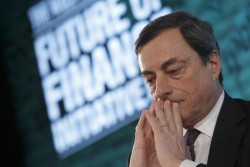Return of liquidity brings further selling
 When traders get the view that there is absolutely no reason to buy a currency they tend to make darn sure that they sell it and remain short for as long as possible. This drives more market participants to join the trend at levels that would usually be left alone. Since there are usually only very slight corrections it is difficult to set an entry point.
When traders get the view that there is absolutely no reason to buy a currency they tend to make darn sure that they sell it and remain short for as long as possible. This drives more market participants to join the trend at levels that would usually be left alone. Since there are usually only very slight corrections it is difficult to set an entry point.
Sterling is suffering such a fate right now. The economy and Brexit are sufficient reasons for the fall in the pound and safe in the knowledge that the Central Bank’s hands are tied despite the inflationary concerns of a weak currency traders continue to force new lows.
The pound fell to 0.9238 yesterday against a common currency that despite being part of an improving economy barely warrants such strength. This is a level not seen since 2008.
The pound has fallen by more than 3% this month alone as traders reflect the public’s sentiment over the Government’s handling of Brexit.
The market has so far been orderly. There is no sign of either the frenzy brought about by the referendum result or last October’s “flash crash”. From a technical perspective, the pound is oversold and price elasticity is falling as sellers become scarcer. A classic setup for a correction? Quite possibly but that has been the case since 0.9000.
Draghi sees the error of his ways
 The last time ECB President Mario Draghi spoke twice in a week, he had to use the second speech to clarify comments he made in the first. That was in Portugal in June and since then speculation has grown about when the ECB will start to taper its asset purchase scheme.
The last time ECB President Mario Draghi spoke twice in a week, he had to use the second speech to clarify comments he made in the first. That was in Portugal in June and since then speculation has grown about when the ECB will start to taper its asset purchase scheme.
Yesterday, speaking in Germany, Draghi’s only mention of economic stimulus was to say that adjustments to monetary policy are “never easy”. He will speak again tomorrow at the Central Bankers Symposium in Jackson Hole Wyoming where we will also hear from Fed Chair, Janet Yellen. Yellen has presided over a more hawkish policy than Draghi but the problem with that is once you start you are expected to continue.
Monetary policy is struggling to keep up with the new innovations that are being seen almost daily. There isn’t and probably hasn’t been for fifty years a standard response a Central Bank can use. Every situation demands creativity whether it is the U.K.’s forced removal from the ERM, LTCM or Lehman Brothers and Sub-Prime, Central Banks need to flexible in their approach.
Finally!
 Next week should see a return to normal for the market after what has seemed to be a summer without end. The old adage is to sell and go away. There will be several traders who wish they had taken that on board in relation to Sterling!
Next week should see a return to normal for the market after what has seemed to be a summer without end. The old adage is to sell and go away. There will be several traders who wish they had taken that on board in relation to Sterling!
The first week of the month is always a major data period usually culminating in the release of the U.S. employment report. However, before that, following a holiday on Monday, there is U.K. house prices, EU Sentiment and inflation and U.S. GDP to contend with.
The last month of the third quarter will bring a return of both liquidity and volatility. The U.K. is likely to dominate for the rest of the year with a perfect storm of Politics, Brexit and the economy set to create opportunities but caution will need to be a watchword given the technical position of the pound right now. It is hard to say there will be better levels to sell but it is just as difficult to see where fresh selling can come from.
















